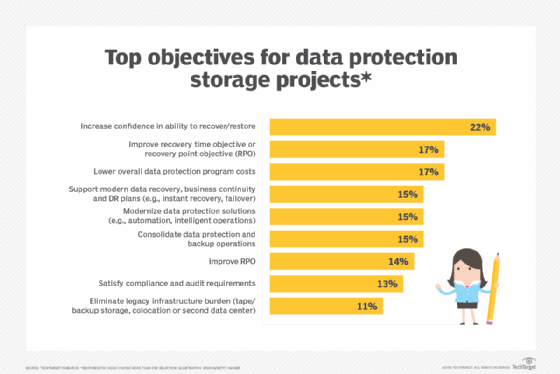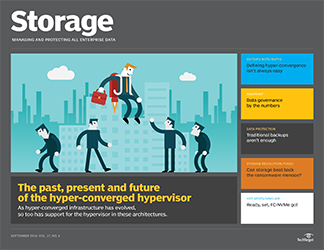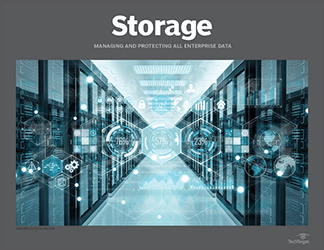Storage
- Editor's letterSMR, HAMR and other HDD technologies you can build on
- Cover storyHow to mold HCI appliances to workload requirements
- InfographicTop infrastructure modernization strategy challenges
- FeatureBeat the software bottleneck by improving storage performance
- ColumnAdd tape backup in 2020 to boost a data protection strategy
- ColumnHybrid cloud ecosystem enables digital transformation

jamesteohart/stock.adobe.com
Add tape backup in 2020 to boost a data protection strategy
Tape has never really gone away. But it can be useful beyond long-term archiving. Learn why IT professionals may want to consider reintroducing tape backup into their data centers.
Tape, if a data center uses it at all, is often relegated to the role of storage for deep archives. But it can also play an essential role in an organization's backup strategy, so much so that IT professionals may want to consider reintroducing the use of tape backup in 2020.
Tape is still the most cost-effective storage medium on the market. Yes, technologies like cloud storage have lower upfront costs. But if you factor in the long-term costs of retaining data -- many backups are retained for seven years or more -- tape quickly becomes less expensive, especially at scale.
Furthermore, tape provides a real, physical air gap that is vital to protect backup data from ransomware and rogue user attacks. The software air gaps common in object storage go a long way, but nothing beats a physical air gap when trying to protect data.
Third, and this may surprise many, tape is reliable. Modern tape technology and the robots that manage tape media have come a long way in the last 10 years. Many organizations that use tape today report almost no instances of unreadable or failed tapes, far less than with HDDs.
How to use tape for backup
While tape is inexpensive, secure and reliable, there is bad news around performance. Tape technology is surprisingly fast if an application can feed data to the tape drive at a very high rate, for a long time. Unfortunately, most backup environments can't supply data to a tape library fast enough. As a result, the technology seems so slow that many data centers have abandoned tape backup in 2020 or relegated it to deep archive use.
The recovery part of the backup process has a few attributes that make tape an ideal storage area for protected data. The first is that the overwhelming number of recovery requests are for data in the most recent or nearly recent backup. The number of restore requests that come from older data is small. Even within the active data set, there is a small percentage of data that needs rapid recovery. A large portion of the active data can wait six or more hours for recovery.
Another positive recovery attribute for tape is when the restore request is for data. While a system failure or data corruption causes the need for recovery from the most recent copy of data, requests like a discovery of information or a need for data to feed an analytics process drive a restore from older data sets.
A final attribute is the size of the two sets. Older data retained by backup infrastructures is often many times the size of the recent data pool the backup process uses to recover from a disaster.
Together, the three attributes mean that the overwhelming amount of protected data likely won't be recovered. The low-priority needs of most protected data means a majority of organizations can reduce the size of their backup disk storage capacity by 80% if they route these older backups to tape for long-term storage.

Most modern backup offerings automatically tier data from disk to tape. Several of these products have disaster recovery orchestration capabilities that enable IT to fully automate the DR process, including restoring data outside of the six-hour window from tape.
A tape can now do more than store a retained copy of data. It can play an active role in the DR process.
A modern backup infrastructure should include tape
Assuming an enterprise has a backup application that supports tape, most software can tier older protected copies to tape as new backup copies are created. As a result, these offerings provide rapid recovery from hard disk or flash, and then use tape for storage and retrieval of older, retained data.
If an organization chooses not to use tape as part of its backup infrastructure, it loses the opportunity to reduce costs, and its potential exposure to risk may increase. A tiered backup infrastructure driven by software enables enterprises to send backups to the primary backup repository first and then have that data staged to less-expensive storage like tape to dramatically lower the cost of the backup infrastructure.



























